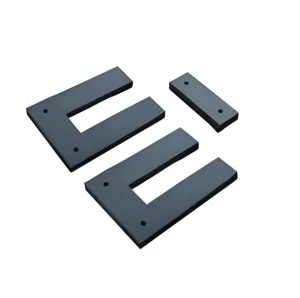
Introduction
Brief Introduction to Laminated Core Transformer
Due to their cost-effectiveness and ease of manufacturing, laminated core transformers are widely employed across various applications. They excel in handling diverse voltage levels efficiently while minimizing core losses and enhancing overall performance. This makes them a preferred choice in both industrial and consumer sectors alike.
Importance in Electrical Systems
Laminated core transformer plays a critical role in electrical systems for several reasons:
Voltage Regulation: They help in stepping up or stepping down voltage levels to match the requirements of different stages of power distribution. This ensures that electricity can be transmitted efficiently over long distances and delivered safely to homes and businesses.
Energy Efficiency: By reducing core losses through the use of laminated cores, these transformers improve the overall energy efficiency of electrical systems. This is crucial for reducing energy consumption and operational costs.
Reliability: Laminated core transformer is known for their durability and reliability. It’s robust design and efficient operation make it a dependable component in electrical networks, ensuring consistent performance over time.
Versatility: These transformers are used in a wide range of applications, from small electronic devices to large industrial machinery. Their versatility and adaptability make them an essential part of modern electrical infrastructure.
Safety: Proper voltage regulation and efficient operation of laminated core transformers contribute to the safety of electrical systems. By ensuring that equipment receives the correct voltage, they help prevent damage and reduce the risk of electrical fires or other hazards.
Construction of Laminated Core Transformer
Core Material and Design
Laminated core transformers use thin sheets of silicon steel or iron, which are coated with an insulating material. Silicon steel is a popular choice because of its high magnetic permeability and low hysteresis loss. This material minimizes energy losses and enhances transformer efficiency. Designers choose the core material based on its ability to reduce eddy current and hysteresis losses.
Laminated Core Structure
The laminated core structure comprises multiple thin sheets, or laminations, of core material, each insulated from the others. These laminations, typically 0.35 mm to 0.5 mm thick, are stacked together to form the core. Insulation between them effectively prevents the formation of large eddy currents, thereby reducing energy losses and heat generation.
These laminations are often arranged in configurations like E-I, L, and U shapes. This meticulous stacking process ensures a consistent magnetic path and minimizes air gaps, which is crucial for maintaining high efficiency and performance.
Types of Laminated Core Transformers
Step-up transformers increase the voltage from a lower primary voltage to a higher secondary voltage. They play a crucial role in power transmission. For example, power plants use step-up transformers to raise the voltage for efficient long-distance transmission. High-voltage transmission reduces energy loss, making the process more efficient. Additionally, step-up transformers are common in renewable energy systems like solar and wind farms. They convert the generated low-voltage electricity to higher voltages suitable for grid integration.
Step-down Transformers
In contrast, step-down transformers decrease the voltage from a higher primary voltage to a lower secondary voltage. They are essential in power distribution networks. By reducing high transmission voltage to safer levels, they ensure that electricity is usable for homes and businesses. Moreover, electronic devices often rely on step-down transformers. For instance, chargers and adapters use them to convert household voltages to the lower voltages required by electronic devices.
Isolation Transformers
Isolation transformers transfer electrical power between two circuits while keeping them electrically isolated. These transformers enhance safety in various applications. In medical equipment, isolation transformers prevent electrical shocks, ensuring patient safety. Industrial applications also benefit from these transformers, as they protect sensitive equipment from electrical noise and transient voltages. Furthermore, data centers use isolation transformers to prevent data corruption caused by electrical noise.
Applications of Laminated Core Transformers
Power Distribution Systems
Laminated core transformers are vital components in power distribution systems, facilitating the efficient transmission of electricity from power plants to substations and ultimately to consumers. These transformers actively regulate voltage levels as needed, ensuring the safe and efficient delivery of electricity over extended distances.
Industrial Applications
In industrial settings, laminated core transformers are used for a variety of purposes:
- Heavy Machinery: They power large industrial machines and equipment, providing the necessary voltage levels for operation.
- Control Systems: Transformers help regulate voltage levels in control systems, ensuring stable and reliable operation.
- Factory Automation: Used in automated manufacturing processes to control and distribute power effectively.
Conclusion
In conclusion, laminated core transformers stand out as crucial components in electrical systems, offering significant advantages in efficiency and performance. Key points highlighted throughout this discussion include:
- The construction of laminated core transformers using stacked, insulated layers of iron or silicon steel effectively reduces energy losses from eddy currents.
- These transformers are versatile, cost-effective to manufacture, and adept at managing various voltage levels, making them suitable for a wide range of industrial and consumer applications.
- Their ability to maintain high efficiency and minimize core losses underscores their importance in enhancing overall system reliability and energy conservation.
It is paramount to select the right transformer tailored to specific application needs. Choosing wisely ensures optimal performance, efficiency, and longevity in electrical systems, aligning with operational requirements and contributing to sustainable energy practices.